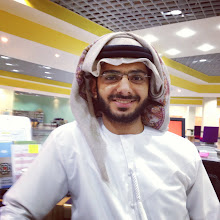Fanoos is the Arabic Word for Lantern, The Fanoos is similar to the Lamp, only it is lighted by a candle instead of oil. It was used mainly during the holy month of Ramadan, the Fanoos has become the symbol of Ramadan, the story started in the era of Mamluks rule over the Near East and Egypt, when women walked around with their lanterns to go to relatives to break their fast. the Fanoos has developed greatly in the past centuries, where is started to take several other shapes.
The present tradition of Ramadan lanterns dates from the rule of Saladin. Lantern designs were copied from the Qanadil and Mishkat (lamps) of Mosques. However, according to the historian, Al-Maqrizi, in his book, "Kitab al-Mawa`iz wa al-'l`tibar Bidhikr al-Khitat wa al-'Athar" (page 265), alludes to an earlier tradition. According to him, it was originally a Coptic Christian festivity celebrated at Christmas time (Coptic version) where people used to parade with colorful candles. The competition was to "outdo" each other with more and more expensive candles until one day when hard times fell upon Egypt, the people were no longer able to afford to buy the very expensive candles and thus the tradition nearly died out.
Lanterns and lamps of various kinds, hues and degrees of brightness, have always been special to the Egyptians. Many stories of their origins have been told. One story has it that the Fatimid Caliph Al Hakim Bi-Amr Illah wanted to light the streets of Cairo during Ramadan nights, so he orderd all the sheikhs of mosques to hang fawanees that could be illuminated by candles. As a result, the Fanoos became a custom that has never been abandoned.
Another story states that, during the time of the Caliph Al Hakim Bi-Amr Illah, women were not allowed to leave their houses except during Ramadan, but even then they had to be preceded by a little boy carrying a copper Fanoos. The Fanoos was then used as a tool to announce the arrival of a woman to caution men in the street to move away. As the laws against women softened, women were allowed to go out as they wished but people liked the idea of the Fanoos, and so it became a tradition that little children carry them in the streets everyday to play.

Regardless of the validity of these stories, the Fanoos remains a very unique symbol of Ramadan to Muslims and Christians alike. It has passed from generation to generation, and is today explicitly associated with children. It's popular image is children playing out in the streets during Ramadan, happily swinging their Fawanees and singing a nonce rhyme in colloquial Egyptian Arabic which was composed by Ahmed Sherif, who is one of the renowned music writers and composers. The song goes like this:
Wahawi ya Wahawi (metaphorically meaning the light of fire)…Iyuha (an unknown word which is used to rhyme in between)…Ruht ya Sha’ban (you have gone, O Sha’ban referring to the month before Ramadan)…Wi Gheet ya Ramadan (You have gone, O Ramadan)…Iyuha….Bint el Sultan (The daughter of the Sultan)…Iyuha…Labsa el Guftan (Is wearing her caftan)…Iyuha…Yalla ya Ghaffar (For God the forgiver)…Iduna el Idiya (Give us this season’s gift)..Yalla ya Ghafar.
In the days leading up to Ramadan, children become more insistent about having a lantern; many can hardly wait to start swinging and singing - for what child, from its earliest years, is not attracted by a glowing, magical lantern? Yet Cairo children may be the most "lantern-struck" of all: Recent research by Dr. Marsin Mahdi of Harvard University indicates that Scheherezade's 'Alaa' al-Din (Aladdin) of the magic lamp may well have been a Cairo boy.
Only the lantern-makers know all the designs, manufacturing secrets and, above all, the names of their magical lanterns. New designs are sometimes created to commemorate special events: A special lantern named "Farouk," after the late Egyptian king, was created many years ago when he was a boy. One of Mahmoud's smallest is called Musa, or "Moses"; a much bigger one is Shaqqat Battikhah Kabirah ("A Big Piece of Watermelon"), bigger still is Najmat al-Bahr ("The Star of the Sea"), which waits in his shop to glow in the night and gladden the heart of some child, once the holy month arrives.
Thanks,
Amer
